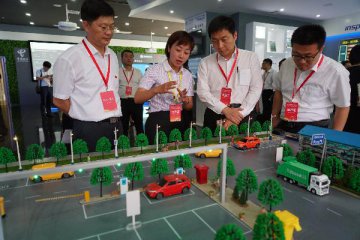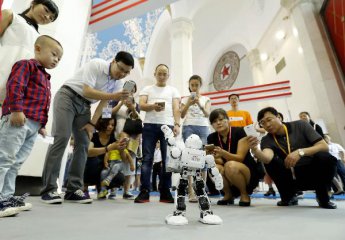The Internet of Things (IoT) standards tend towards greater applicability and openness, according to the Annual Report on the Development of China’s Internet of Things (2016-2017).
The report, compiled by Jiangsu Center of China Economic Information Service, will be released in Wuxi on September 1, 2017 as one of the important events of the forthcoming World Internet of Things Exposition 2017.
The report says a framework for the Internet of Things (IoT) standard system, covering overall standards, fundamental common standards and application standards for specific industries, was basically established throughout the world in 2016, as a result of the collective efforts made by a number of standards-developing organizations engaged in this sector.
The report points out that the R&D direction has changed for the overall framework standards of the global Internet of Things, which lays more stresses on IoT applications. In December 2016, an international standard for the reference architecture of “Six-domain IoT Model” primarily developed by China was adopted by 34 member states of International Organization for Standardization (ISO/IEC).
The “Six-domain Model” mainly involves user domain, target domain, perceptual control domain, service provision domain, operation and control domain and resource exchange domain of IoT. Networked connection is established among domains according to the business logic, thus forming an IoT ecological system for individual industries.
Based on the “Six-domain Model”, this system can incisively gain ground in industrial chains and segments, and contribute to the formation of a real collaborative ecological system for the IoT sector, the report says.
In a bid to realize an extensive integration between the overall IoT framework standards and such industries as transportation, medical care and power industry, the ITU-T Study Group 20 was officially renamed as “Study Group 20 for Internet of Things and Smart Cities and Communities” in the early 2017, which consists of WP1 and WP2. WP1 is engaged in four topics, i.e., Q1: network and infrastructure; Q2: demands and capabilities; Q3: systems and protocols; and Q4: services and applications. WP2 is engaged in three topics, i.e., Q5: terminology and new technology; Q6: security and logo; and Q7: smart city assessment. The Group is co-chaired by Sang Ziqin (FiberHome, China) and Harinderpal Grewal (Singapore).
In addition, the work on building a W3C WoT Interest Group has largely fulfilled. This working group is expected to be set up in 2017, which will be dedicated to pushing forward web-based applications, services and market access so as to stimulate application-related innovations.
The previously opponent standard organizations began to join hands and cooperate in 2016, which reached a unified consensus on standards. A compatible collaboration mode is in the pipeline.
In the past few years, Intel and Qualcomm separately established their own IoT standard organizations: “Open Interconnect Consortium” and “AllSeen Alliance”. In recent years, both giants began to cooperate with each other. In 2016, “AllSeen Alliance”, led by Qualcomm and Microsoft, established the Open Connectivity Foundation (OCF) together with Intel, Samsung Electronics and other enterprises. Following that, the Linux Foundation has carried out unified management for the previously decentralized IoT platform standards.





















Latest comments